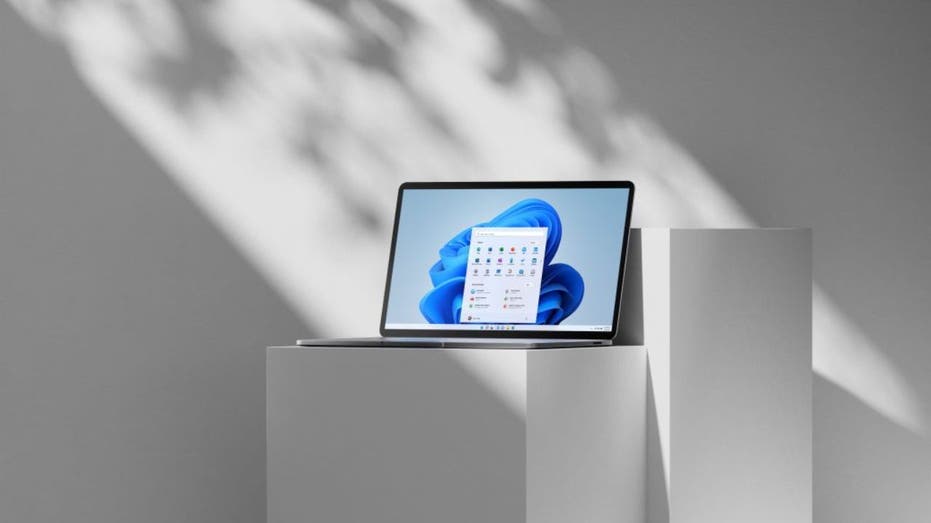WWW.ZDNET.COM
Windows 11 24H2 bug list updated: One fixed, 12 to go
ZDNETAfter months of beta testing, Microsoft officially released its major 2024 update for Windows 11 on October 1. Known asWindows 11 24H2, the latest version enhances theCopilot AI, spruces up File Explorer, promises faster performance and greater stability, and introduces other improvements.Rolling out to eligible Windows 11 23H2 and 22H2 users, the update may appear on your PC's Windows Update screen. If so, you can certainly install it from there. Otherwise, the new version is accessible onMicrosoft's Download Windows 11 page, where you can grab it through the Installation Assistant, installation media, or as an ISO file.Also: No, Microsoft has not 'reversed course' on Windows 11 hardware requirementsBut before you dive into the 2024 update, you may want to reconsider. The new version has been plagued by a variety of bugs that could prevent you from fully using Windows the way you want and expect to.Some of the glitches have been documented by Microsoft, and others have been reported by Windows users. In response, Microsoft hasput the update on hold for problematic PCsthat could encounter blue screens and other issues.To address the barrage of bugs, the company has rolled out three series of patches so far -- one in late October, another in mid-November, and a third on December 10 as part of the monthly Patch Tuesday. A January patch also addressed a conflict with several Ubisoft games.Also:How to upgrade your 'incompatible' Windows 10 PC to Windows 11: Two waysTheOctober updatefixed a few bugs but also created a couple of new ones. TheNovember updateresolved several, but certainly not all, of the outstanding glitches. The December update fixed one specific glitch with certain USB-connected scanners and other devices. The January patch finallyfixed conflicts with the Ubisoft gamesStar Wars Outlaws, Avatar: Frontiers of Pandora, Assassin's Creed Valhalla, Assassin's Creed Origins, and Assassin's Creed Odyssey.But further bugs have continued to pop up, turning the update into an albatross around Microsoft's neck. Here are just some of the issues you may encounter if you jump to the new version.1. Inability to install future updatesIf you installed the Windows 11 24H2 update through a CD or USB flash drive anytime between Oct. 8, 2024, and Nov. 12, 2024, you may beunable to run any future security updates. That means you're stuck if new vulnerabilities are discovered and you need to patch the OS. The problem doesn't occur if you installed or updated Windows 11 24H2 through Windows Update or the Microsoft Update Catalog website."When using media to install Windows 11, version 24H2, the device might remain in a state where it cannot accept further Windows security updates," Microsoft has explained on itsWindows 11, version 24H2 known issues and notifications page.What's the fix? If you haven't yet run the updates from the past few months for Windows 11 24H2 and want to install them via CD or USB drive, be sure to grab the latest version fromMicrosoft's Download Windows 11 page. If you've already updated Windows 11 24H2 through physical media and can't install the latest patches, be patient. Microsoft is working on a fix for the problem. Screenshot by Lance Whitney/ZDNET2. Auto HDR feature conflict with gamesWindows 11 24H2 users withAuto HDRenabled could find thatmany games fail to display the right colors, while some may not respond at all. Auto HDR tries to enhance the graphics for games by converting standard dynamic range (SDR) content to high dynamic range (HDR). Microsoft has paused the update for affected PCs. If you've already installed the 2024 update, you can sneak past the problem by simply turning off Auto HDR through the display settings in Windows. Screenshot by Lance Whitney/ZDNET3. Conflict with Easy Anti-Cheat online gaming appA program known asEasy Anti-Cheatis automatically installed with some online games to prevent cheating. Windows 11 2024 doesn't play well with this software-- users can experience the dreaded Blue Screen of Death (BSOD), at least in rare cases, according to Microsoft.Only devices with Intel's Alder Lake+ processors and vPro platform are affected. Microsoft is working with the developer of Easy Anti-Cheat to resolve the glitch. Until then, those who run this app on PCs with the affected Intel chip should be aware of the conflict. Screenshot by Lance Whitney/ZDNET4. Blue screens in other instancesBeyond the clash with Easy Anti-Cheat, other situations can lead to the BSOD in the Windows 11 2024 update. Intel and Microsoft have discoveredincompatibility issues with certain driversfor Intel Smart Sound Technology (Intel SST) on Intel 11th Gen Core processors. People running the affected driver and Windows 11 24H2 could run into blue screens.Also: Can't quit Windows 10? Microsoft will soon charge for updates. Here's how muchSources told Windows Latest that Microsoft is reportedly aware of a glitch in the 24H2 update that causesblue screening for PCs with certain Western Digital SSDs. This one has affected Lenovo, Asus VivoBook, and other model computers.In another issuespotted by Windows Latest, PCs with Z890 motherboards sold by MSI, Asus, and other vendors can run into blue screens. This occurs most notably on systems with the Core Ultra 200S series and its integrated Xe-LPG graphics. Alyson Windsor/ZDNET5. Disappearing mouse pointerA bug in Windows 11 24H2 and other recent Windows updatescauses the mouse pointer or cursor to vanishin Chromium-based apps such as Google Chrome and Microsoft Edge, according to Windows Latest. The glitch only occurs when you interact with a text input field, though there is a workaround for it, which Windows Latest describes in its article. Screenshot by Lance Whitney/ZDNET6. Internet connection issuesSome people who've installed the Windows 11 2024 update report that theirinternet connections are now glitchy. As discovered byWindows Report, these users seem to be able to connect via Ethernet or Wi-Fi, but they don't receive a valid IP address and therefore can't get an internet or network connection.Also: The best VPN services: Expert testedNeither updating drivers and firmware nor resetting the network connectivity resolves the problem. In certain cases, using a static IP address instead of a dynamic address resolves the issue. Screenshot by Lance Whitney/ZDNET7. Time zone glitchUnless you have administrative privileges in Windows, you may beunable to change the time zoneat the Date & Time screen in Windows Settings. In this case, the time zone option fails to even appear. Microsoft has tagged this bug as mitigated, which means it hasn't been fixed, but there is a workaround. Just head to the old Date and Time setting in Control Panel and change it from there. Screenshot by Lance Whitney/ZDNET8. Broken clipboard historyThe Windows clipboard history is a great tool for storing and syncing a history of copied clipboard items across multiple devices. I've liked this feature ever since Microsoft introduced it in 2018. Alas, the latest Windows 11 update breaks the clipboard history, at least for some people.Also:The best Windows laptops: Expert testedAsspotted by Windows Latest, dozens of users chiming in on different online forums report that the tool keeps insisting that the clipboard history is empty, even though they've already copied one or more items to it. Though this bug seems to affect only a small number of users, it was flagged by Windows Insider testers a few months ago. But apparently, Microsoft didn't bother to fix it or didn't fix it properly. Screenshot by Lance Whitney/ZDNET9. Network sharing doesn't workIn another network-related issue triggered by the 24H2 update on some PCs, either the computer or other devices fail to appear in the network list,according to Windows Latest. As a result, you're unable to share files and printers between different PCs.The problem could be related to Function Discovery Resource Publication (FDResPub), which lets Windows 11 remain visible on the network. As a workaround, some people have resolved the glitch by setting FDResPub to start manually instead of automatically.10. Printer issues with ARM-based Copilot+ PCsYet another issue that has been popping up affects people who own Copilot+ PCs. Based on several user reportsspotted by Neowin, some users who upgrade to Windows 11 24H2 are unable to set up or use a printer. The glitch seems to be hitting those with printers made by HP, Canon, Brother, and other manufacturers.Microsoft has posteda support articlehighlighting the problem and offering some workarounds. But at this point, this bug remains unresolved.11. Audio output glitch on some PCsPCs that contain Dirac Audio with a file named cridspapo.dll could bump into audio issues.Dirac Audiois a digital sound technology that improves audio clarity and precision. Some users with this configuration who ran the update say that the integrated speakers, Bluetooth speakers, and Bluetooth headsetshave stopped workingand that first-party and third-party applications no longer recognize these speakers or headsets.As with most of the bugs, Microsoft has paused the update for affected PCs. Once the manufacturer releases a fix, Microsoft promises to offer a new driver through the standard Windows Update process. Dirac12. Outlook may not launch with Google Workspace SyncIn some cases,Microsoft Outlook may fail to load if Google Workspace Sync is installed. This particular Google Workspace Sync tool lets you manage your Google Workspace emails, calendar events, contacts, notes, and tasks directly in Outlook.The specific error that pops up says: "Cannot Start Microsoft Outlook. Cannot Open the Outlook Window. The set of folders cannot be opened. An unexpected error has occurred. MAPI was unable to load the information service..."Microsoft has put a hold on the update for affected users. You may be able to resolve the issue on your own by updating to the latest version of Google Workspace Sync (4.3.68.0). But if the glitch persists, you'll have to contact Google Workspace Support for help. MicrosoftThese are just some of the glitches plaguing Microsoft and its users with the Windows 11 2024 update. Microsoft has listed others on itsKnown Issues and Notifications page.I installed the update on a test Windows 11 PC and have encountered a few of the bugs described here, along with others. A calendar and contact syncing program I use called Sync2Cloud won't run in Windows 11 24H2. Two driver updates from Intel keep failing when I try to install them. Connecting to the PC using Microsoft's Remote Desktop Connection doesn't always work the first time around.Also: You can finally test Microsoft's controversial Recall feature - here's howSome conflicts are expected when Microsoft rolls out a major new Windows update. Even with widescale beta testing, not every potential problem will be found. However, issues like these are still frustrating for those of us who need to use Windows for work and other tasks.The number of bugs in Windows 11 24H2 also seems greater than in past annual Windows updates. The ongoing spread of one bug after another and Microsoft's need to stall the update for many people both point to a problem with this latest update. Until more of these bugs can be squashed, Windows 11 users may want to hold off on the 2024 update and stick with their current version.Windows









